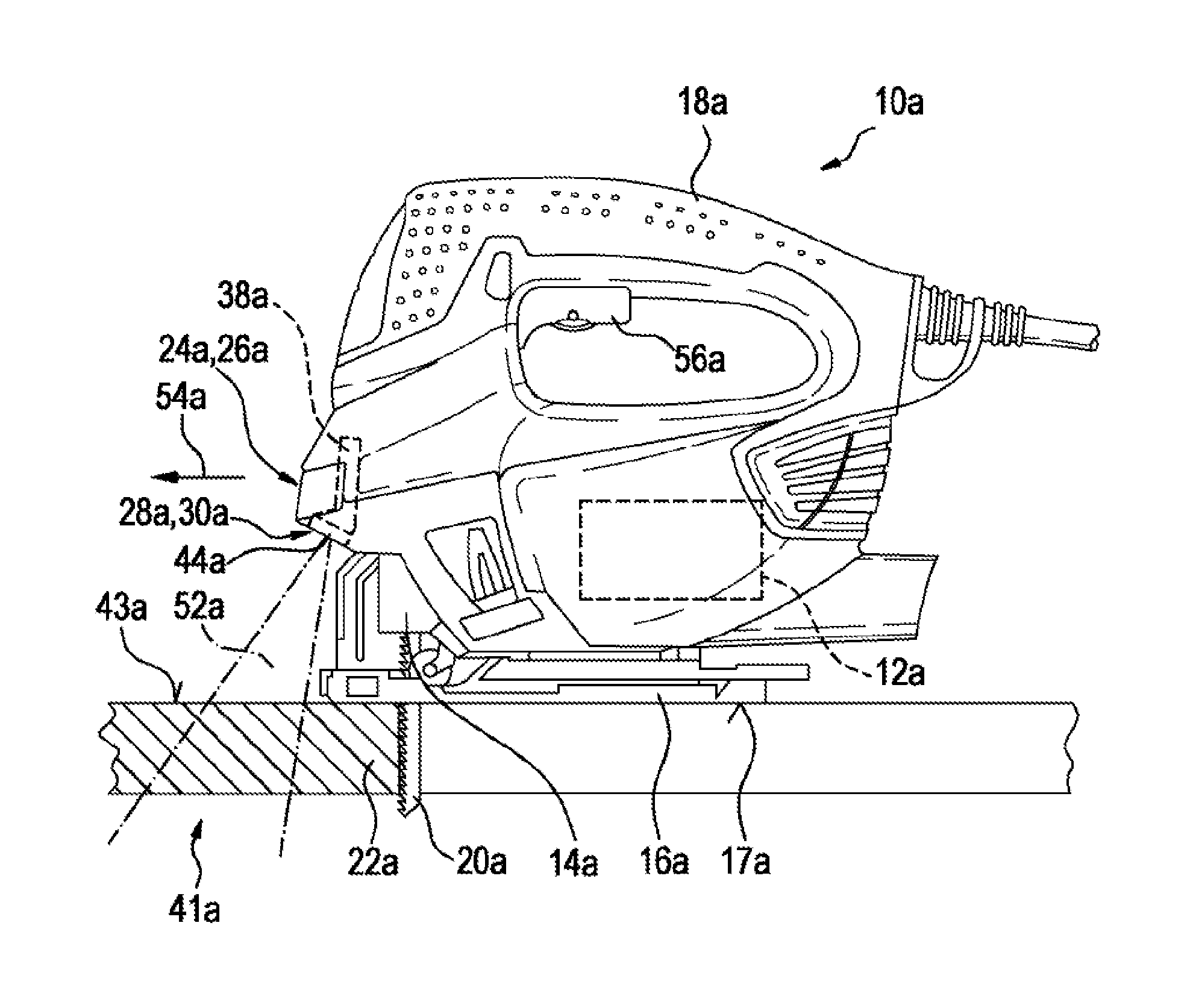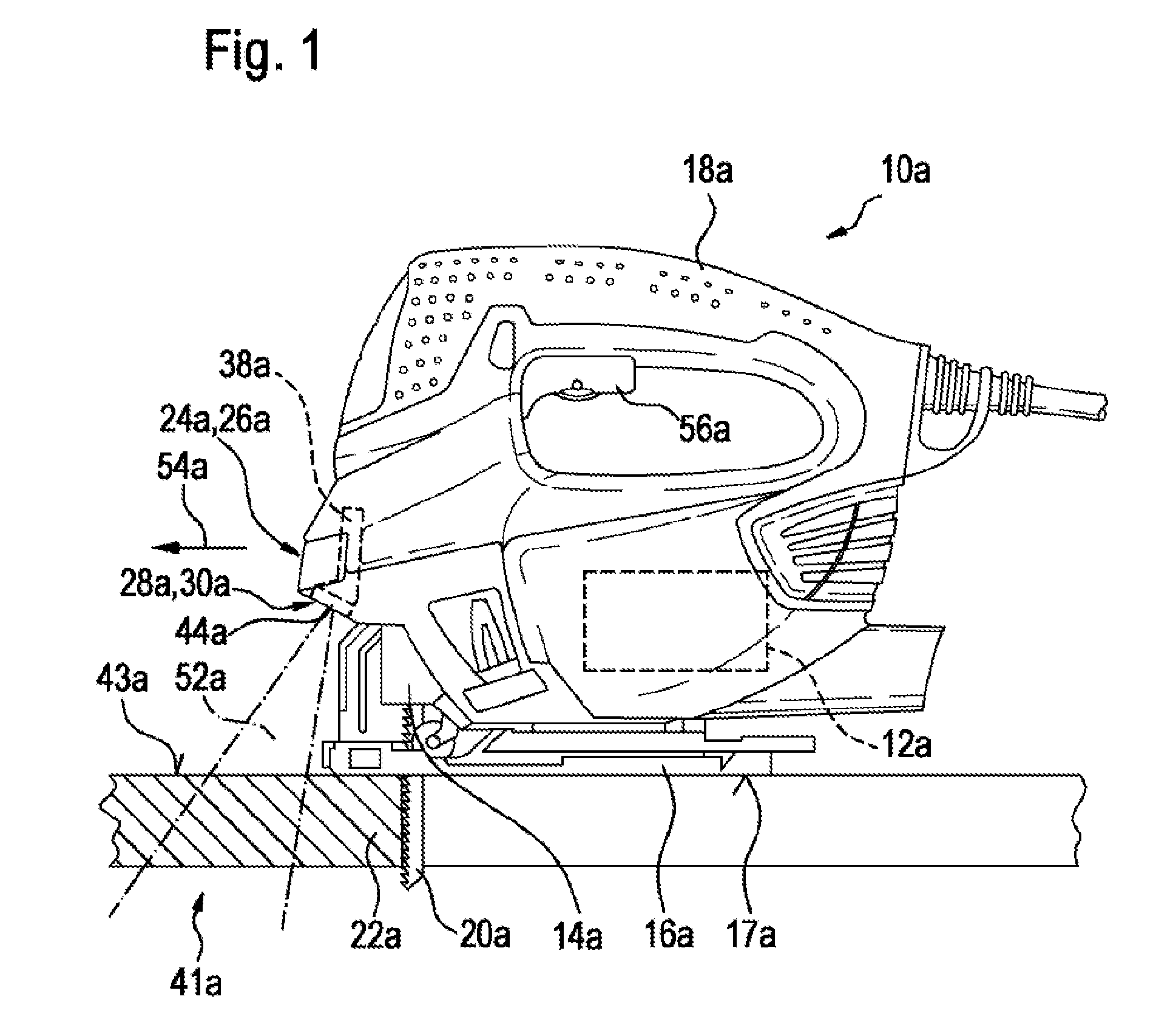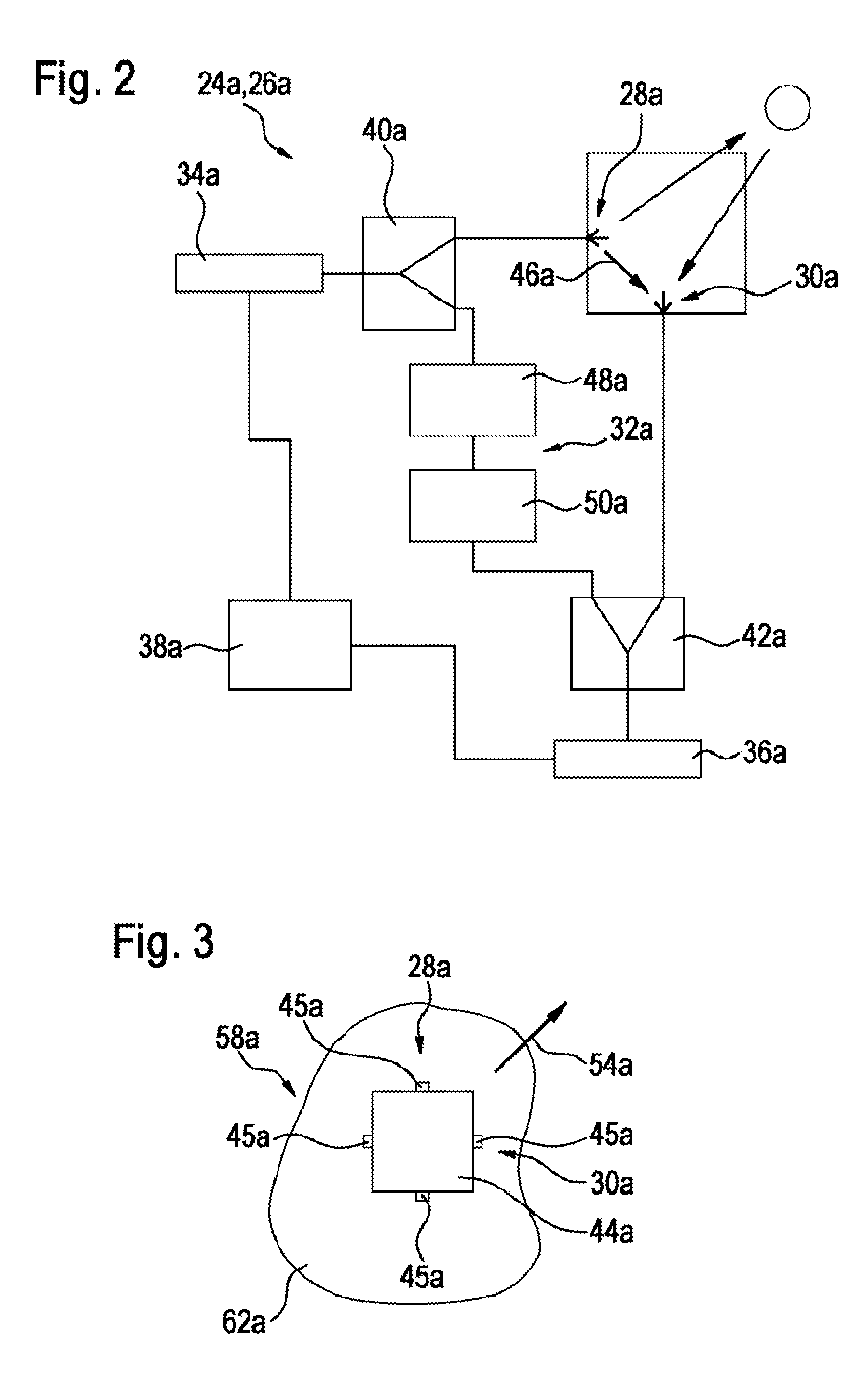Locating Device
a technology of locating device and locating device, which is applied in the direction of measuring device, instrument, and detection using electromagnetic waves, can solve the problems of unbalanced feeding of antennas, and achieve the effects of low cost, advantageous directional effect, and high reliability
- Summary
- Abstract
- Description
- Claims
- Application Information
AI Technical Summary
Benefits of technology
Problems solved by technology
Method used
Image
Examples
Embodiment Construction
[0032]FIG. 1 shows a hand-held tool 10a, specifically a hand-held machine tool. The hand-held tool 10a is in the form of a jigsaw. The hand-held tool 10a has a drive motor 12a, an insertion tool mount 14a, a workpiece guide means 16a having a workpiece support face 17a and a main grip 18a. During a work process, the drive motor 12a drives the insertion tool mount 14a, specifically in oscillating fashion. In addition, the drive motor 12a drives an insertion tool 20a back and forth during operation. In a ready state, the insertion tool mount 14a mounts the insertion tool 20a. The insertion tool 20a is in the form of a jigsaw blade. During a work process, when moved by a user, the hand-held tool 10a slides over a workpiece 22a on the workpiece support face 17a. The main grip 18a is arranged on a side of the hand-held tool 10a which is remote from the workpiece guide means 16a.
[0033]In addition, the hand-held tool 10a has a locating apparatus 24a, shown schematically in FIG. 2. The loc...
PUM
 Login to View More
Login to View More Abstract
Description
Claims
Application Information
 Login to View More
Login to View More - R&D
- Intellectual Property
- Life Sciences
- Materials
- Tech Scout
- Unparalleled Data Quality
- Higher Quality Content
- 60% Fewer Hallucinations
Browse by: Latest US Patents, China's latest patents, Technical Efficacy Thesaurus, Application Domain, Technology Topic, Popular Technical Reports.
© 2025 PatSnap. All rights reserved.Legal|Privacy policy|Modern Slavery Act Transparency Statement|Sitemap|About US| Contact US: help@patsnap.com



